当前位置:首 页 --> 方案设计
LatticeUSB Type-C 解决方案
发布时间:2016/4/8 13:19:00 来源:
USB Type-C插座,插头和电缆和现有的USB连接相比,提供更小更薄和更可靠的连接.USB Type-C解决方案目标应用在各种平台如笔记本电脑,PC,智能手机,平板电脑等.本文介绍了USB Type-C主要特性,框图和USB Type-C解决方案主要特性,系统级框图和系统级功能框图,以及USB CD/PD充电器框图,电路图和材料清单,USB CD/PD PHY主/从框图,电路图和材料清单以及USB CD/PD主/从框图,电路图和材料清单.
The USB Type-C receptacle, plug and cable provide a smaller, thinner and more robust alternative to existing USB interconnect. This new solution targets use in a variety of platforms, ranging from notebooks, PCs and monitors to smartphones and tablets, where existing Standard-A and Micro-AB receptacles are deemed too large, difficult to use, or inadequately robust. The USB Type-C plug enhances ease of use by being pluggable in either upside-up or upside-down directions and in either direction between host and devices.Determination of this hosttodevice relationship is accomplished through a Configuration Channel(CC)that is connected through the cable. These various solutions demonstrate the capabilities of the Lattice device as USB 3.1 Power Delivery and Type-C ASSP.
The solution include a DRP (dual-role port) function, hence it can be used as both DFP/Host/Source and UFP/Device/Sink after role resolution.One of the most important features of USB Type-C is the reversible nature of the connector and plug. This design also provides the provision to control a Super Speed switch required for data channel alignment/orientation management. Lattice PD controller can control both the SS (Super Speed Switch) and the HS (High Speed Switch) providing a seamless interface with Type C connector without any intervention from the main processor. The USB PD specifications have another exciting functional extension using the Type-C connector known as Alternate Modes. Lattice PD controller provides support for Structured VDM (Vendor Defined Messages)to handle these alternate modes like VESA Display Port over Type-C.
USB Type-C主要特性:
• Three solutions cover majority of USB Type-C Power Delivery (PD) and Cable Detect (CD) applications:
— CD/PD for charger
— CD/PD-Phy for hosts/device
— CD/PD for hosts/device
• Logical based PHY provides fast deterministic response and low power,typical solution power is 7 mW
• Standby power less than 100 uW
• Flexible 8-Bit uC policy engine enables easy modifications
• Support for fast development
— Industry proven solutions reduce design risk
— Schematics and BOMs available to minimize system design effort
• Wide range of packages to match PCB technology
— 36 WLCSP
— 48 QFN
— 36 ucBGA
— 81 ucBGA
• Ultra-small form factor, as small as 2.078 mm X 2.078 mm
• USB Type-C PHY
• USB Type-C Cable Detect(CD)support per USB Cable and Connector Specification
• USB Power Delivery(PD) support per Power Delivery Specification
USB Type-C器件表:


图1.USB Type-C物理层和电源检测协议高级功能框图
USB Type-C enables products to provide faster charging, faster downloads and support other standards such as DisplayPort and MHL over Type-C. Lattice Type-C solutions provide Cable Configuration (CC), Power Delivery (PD) communication required to unlock these benefits. Some parts include integrated switches to simplify the implementation of video output.
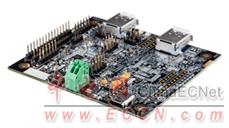
图2.USB Type-C解决方案外形图
USB Type-C解决方案主要特性:
Cost optimized CC/PD-PHY options
Fully integrated CC/PD full stack options
Standby power as low as 150uW
Integrated USB3.1 and video switch options
FPGA options allow full customization
ASSP options minimize discrete component requirements
This design document describes the following USB Type-C Cable Detect (CD) and Power Delivery (PD) solutions:
• CD/PD for charger
• CD/PD PHY for hosts/devices
• CD/PD for hosts/devices
CD/PD for charger uses part of the modules explained in the Module Level Diagram of Lattice USB 3.1 Type-C Solution section and 8 Bit controller based implementation as explained in the Lattice USB 3.1 Type-C Solution with Micro-controller (MICO8) section.
CD/PD PHY for hosts/devices has the PHY (see the PHY section) implemented in Lattice Device and PD Protocol implemented in Application Processor as explained in the Lattice USB 3.1 Type-C Solution with an Application Processor section. For CD/PD for hosts/devices, refer to the Module Level Diagram of Lattice USB 3.1 Type-C Solution section.
The Lattice USB Type-C solution is designed to provide bidirectional configuration channel signals (CC1/CC2) to the Type-C connector. The solution also provides VBUS power circuitry control signal and Super- Speed (SS) switch control signals.
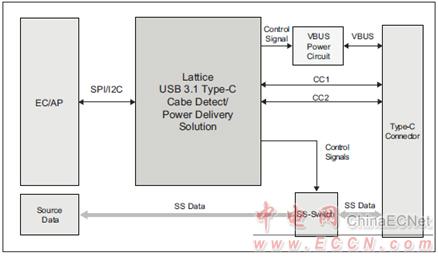
图3.USB Type-C系统级框图

图4. USB Type-C系统级功能框图
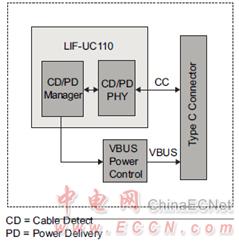
图5.USB CD/PD充电器解决方案(容性电缆)框图
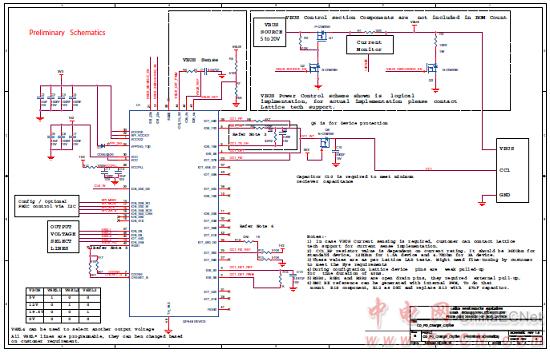
图6.USB CD/PD充电器解决方案(容性电缆)电路图
USB CD/PD充电器解决方案(容性电缆)电路材料清单:
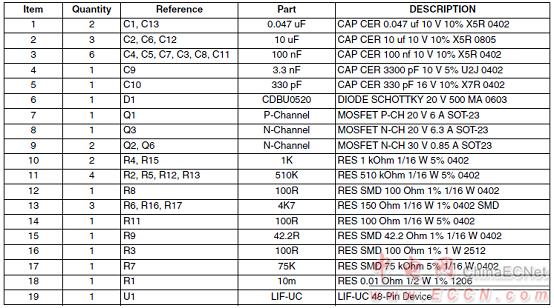
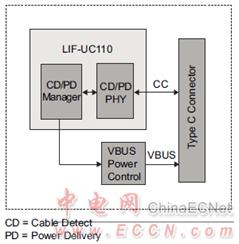
图7.USB CD/PD充电器解决方案(非容性电缆)框图
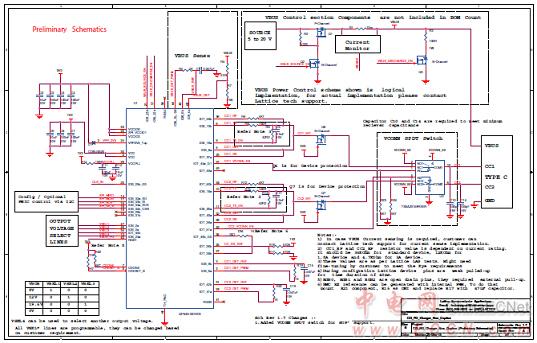
图8.USB CD/PD充电器解决方案(非容性电缆)电路图
USB CD/PD充电器解决方案(非容性电缆)电路材料清单:
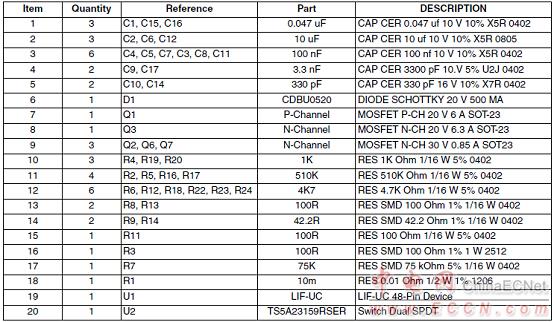
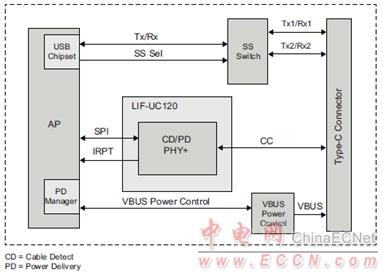
图9.USB CD/PD PHY主/从框图
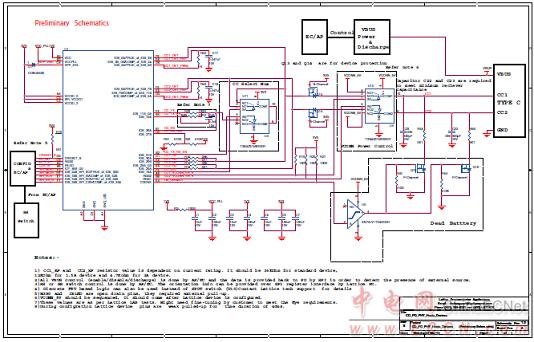
图10.USB CD/PD PHY主/从电路图
USB CD/PD PHY主/从电路材料清单:
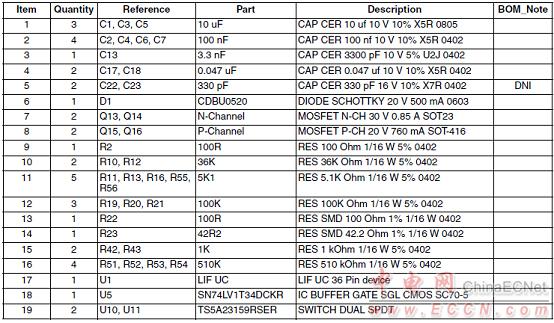
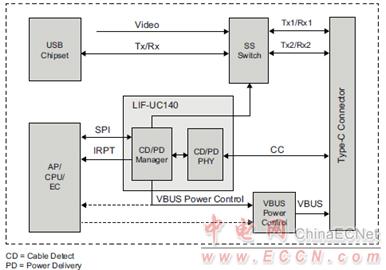
图10.USB CD/PD主/从框图
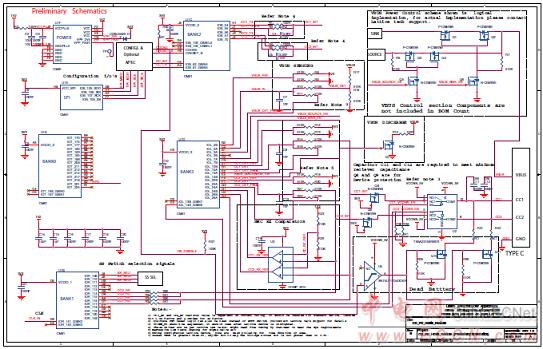
图11.USB CD/PD主/从电路图
USB CD/PD主/从电路材料清单:
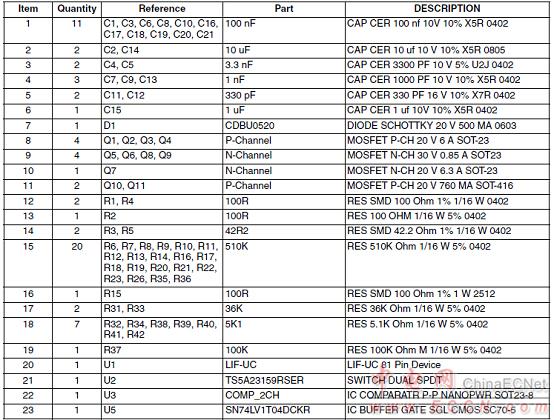
The USB Type-C receptacle, plug and cable provide a smaller, thinner and more robust alternative to existing USB interconnect. This new solution targets use in a variety of platforms, ranging from notebooks, PCs and monitors to smartphones and tablets, where existing Standard-A and Micro-AB receptacles are deemed too large, difficult to use, or inadequately robust. The USB Type-C plug enhances ease of use by being pluggable in either upside-up or upside-down directions and in either direction between host and devices.Determination of this hosttodevice relationship is accomplished through a Configuration Channel(CC)that is connected through the cable. These various solutions demonstrate the capabilities of the Lattice device as USB 3.1 Power Delivery and Type-C ASSP.
The solution include a DRP (dual-role port) function, hence it can be used as both DFP/Host/Source and UFP/Device/Sink after role resolution.One of the most important features of USB Type-C is the reversible nature of the connector and plug. This design also provides the provision to control a Super Speed switch required for data channel alignment/orientation management. Lattice PD controller can control both the SS (Super Speed Switch) and the HS (High Speed Switch) providing a seamless interface with Type C connector without any intervention from the main processor. The USB PD specifications have another exciting functional extension using the Type-C connector known as Alternate Modes. Lattice PD controller provides support for Structured VDM (Vendor Defined Messages)to handle these alternate modes like VESA Display Port over Type-C.
USB Type-C主要特性:
• Three solutions cover majority of USB Type-C Power Delivery (PD) and Cable Detect (CD) applications:
— CD/PD for charger
— CD/PD-Phy for hosts/device
— CD/PD for hosts/device
• Logical based PHY provides fast deterministic response and low power,typical solution power is 7 mW
• Standby power less than 100 uW
• Flexible 8-Bit uC policy engine enables easy modifications
• Support for fast development
— Industry proven solutions reduce design risk
— Schematics and BOMs available to minimize system design effort
• Wide range of packages to match PCB technology
— 36 WLCSP
— 48 QFN
— 36 ucBGA
— 81 ucBGA
• Ultra-small form factor, as small as 2.078 mm X 2.078 mm
• USB Type-C PHY
• USB Type-C Cable Detect(CD)support per USB Cable and Connector Specification
• USB Power Delivery(PD) support per Power Delivery Specification
USB Type-C器件表:


图1.USB Type-C物理层和电源检测协议高级功能框图
USB Type-C enables products to provide faster charging, faster downloads and support other standards such as DisplayPort and MHL over Type-C. Lattice Type-C solutions provide Cable Configuration (CC), Power Delivery (PD) communication required to unlock these benefits. Some parts include integrated switches to simplify the implementation of video output.

图2.USB Type-C解决方案外形图
USB Type-C解决方案主要特性:
Cost optimized CC/PD-PHY options
Fully integrated CC/PD full stack options
Standby power as low as 150uW
Integrated USB3.1 and video switch options
FPGA options allow full customization
ASSP options minimize discrete component requirements
This design document describes the following USB Type-C Cable Detect (CD) and Power Delivery (PD) solutions:
• CD/PD for charger
• CD/PD PHY for hosts/devices
• CD/PD for hosts/devices
CD/PD for charger uses part of the modules explained in the Module Level Diagram of Lattice USB 3.1 Type-C Solution section and 8 Bit controller based implementation as explained in the Lattice USB 3.1 Type-C Solution with Micro-controller (MICO8) section.
CD/PD PHY for hosts/devices has the PHY (see the PHY section) implemented in Lattice Device and PD Protocol implemented in Application Processor as explained in the Lattice USB 3.1 Type-C Solution with an Application Processor section. For CD/PD for hosts/devices, refer to the Module Level Diagram of Lattice USB 3.1 Type-C Solution section.
The Lattice USB Type-C solution is designed to provide bidirectional configuration channel signals (CC1/CC2) to the Type-C connector. The solution also provides VBUS power circuitry control signal and Super- Speed (SS) switch control signals.

图3.USB Type-C系统级框图

图4. USB Type-C系统级功能框图

图5.USB CD/PD充电器解决方案(容性电缆)框图

图6.USB CD/PD充电器解决方案(容性电缆)电路图
USB CD/PD充电器解决方案(容性电缆)电路材料清单:


图7.USB CD/PD充电器解决方案(非容性电缆)框图

图8.USB CD/PD充电器解决方案(非容性电缆)电路图
USB CD/PD充电器解决方案(非容性电缆)电路材料清单:


图9.USB CD/PD PHY主/从框图

图10.USB CD/PD PHY主/从电路图
USB CD/PD PHY主/从电路材料清单:


图10.USB CD/PD主/从框图

图11.USB CD/PD主/从电路图
USB CD/PD主/从电路材料清单:

|
||||||
|
||||||



